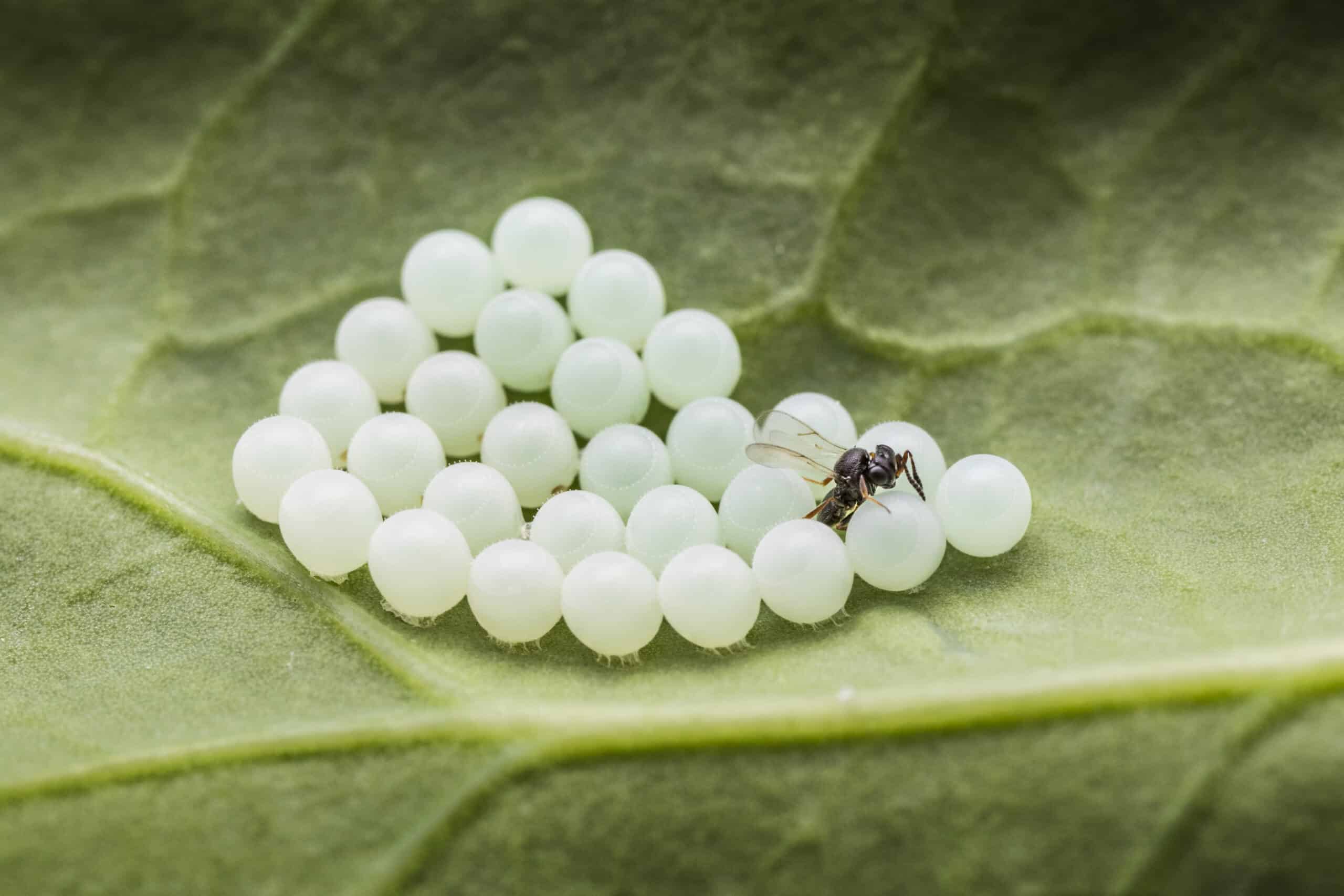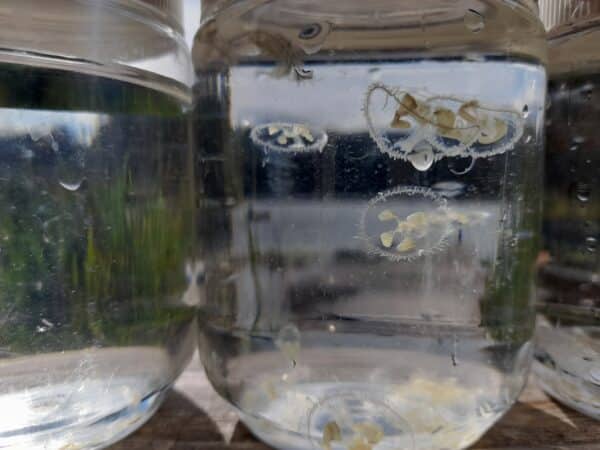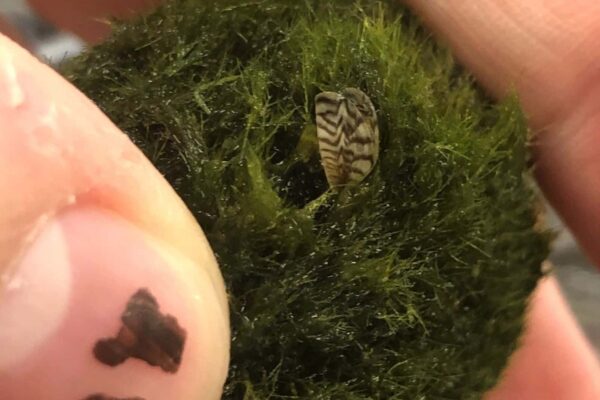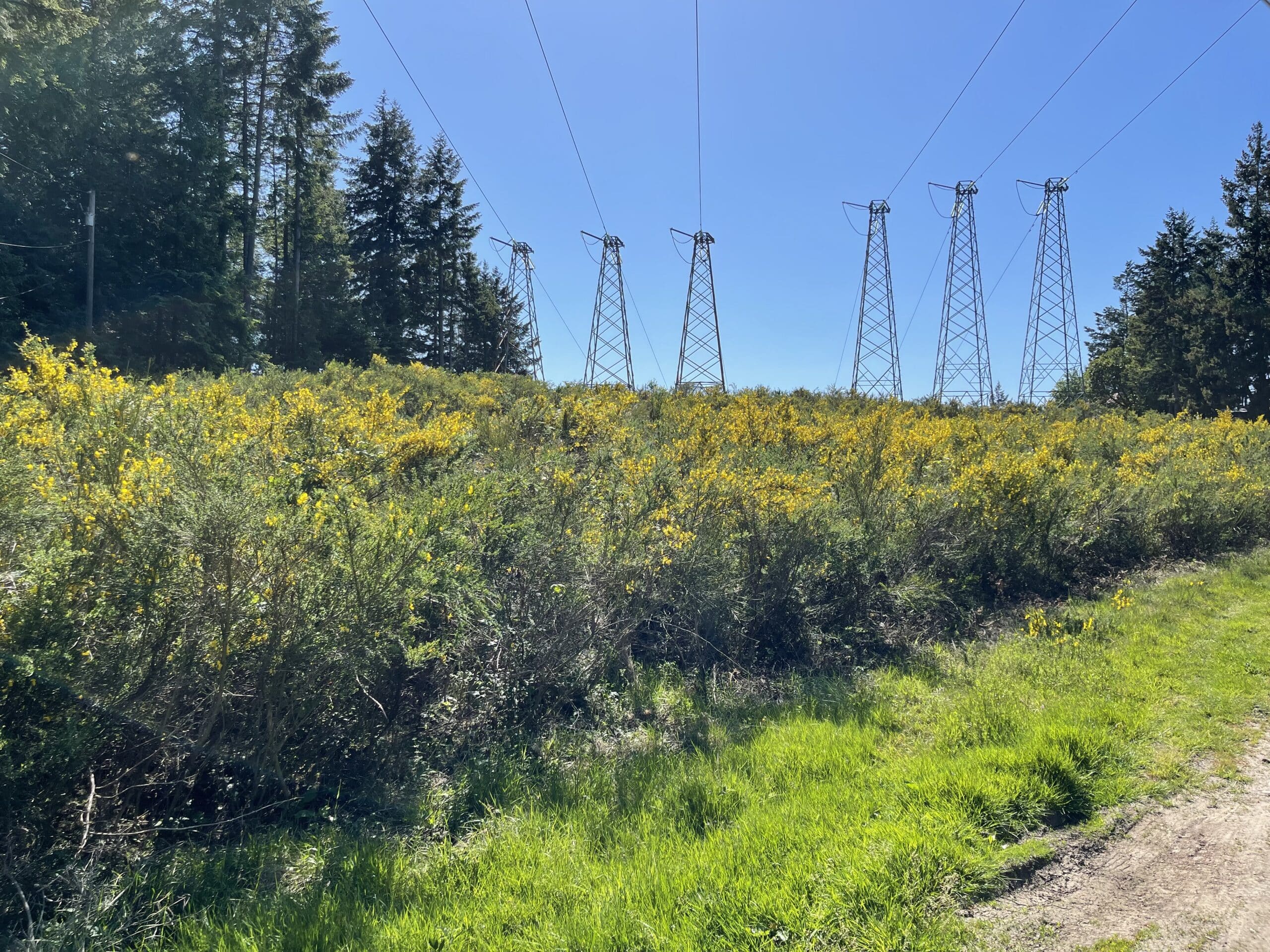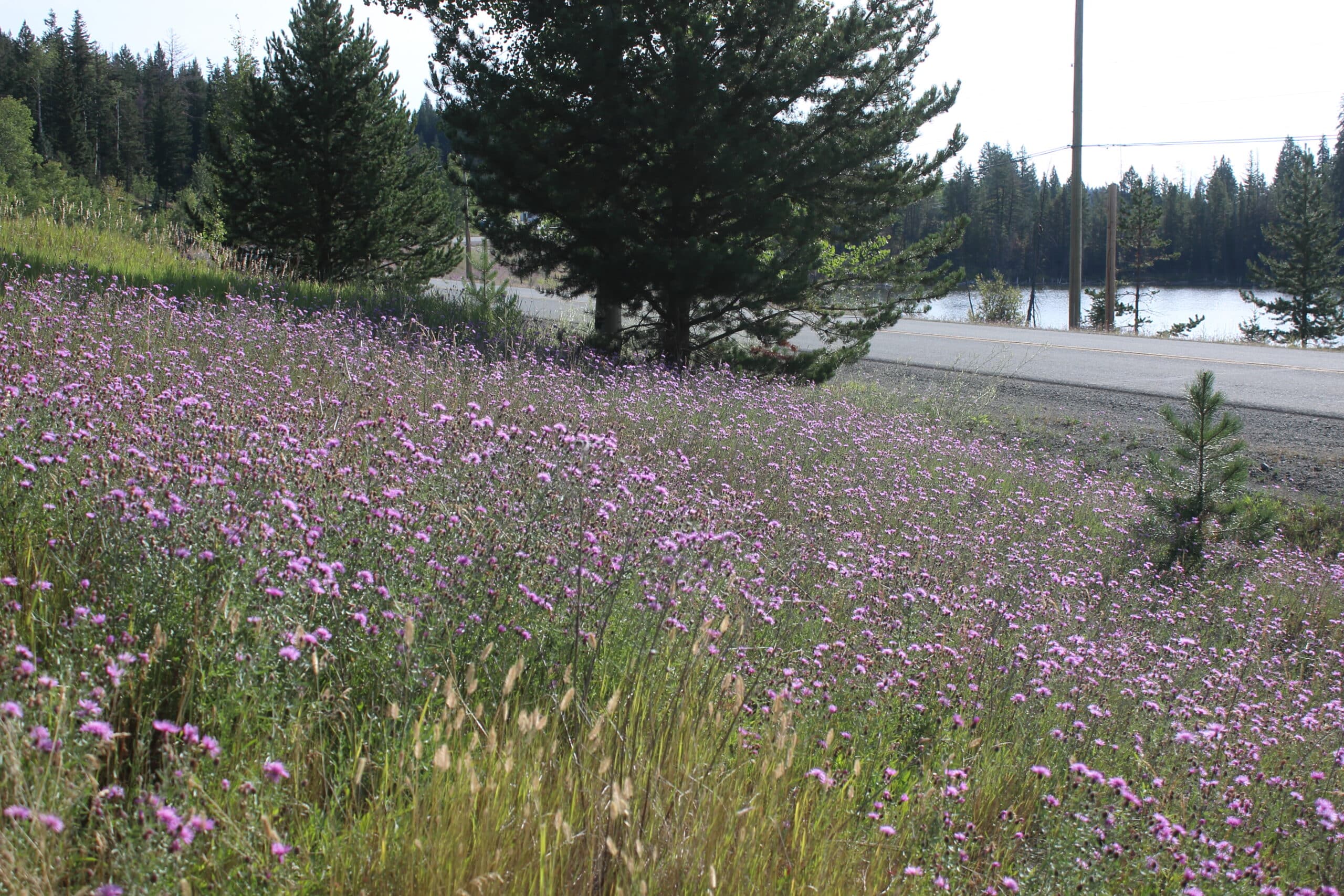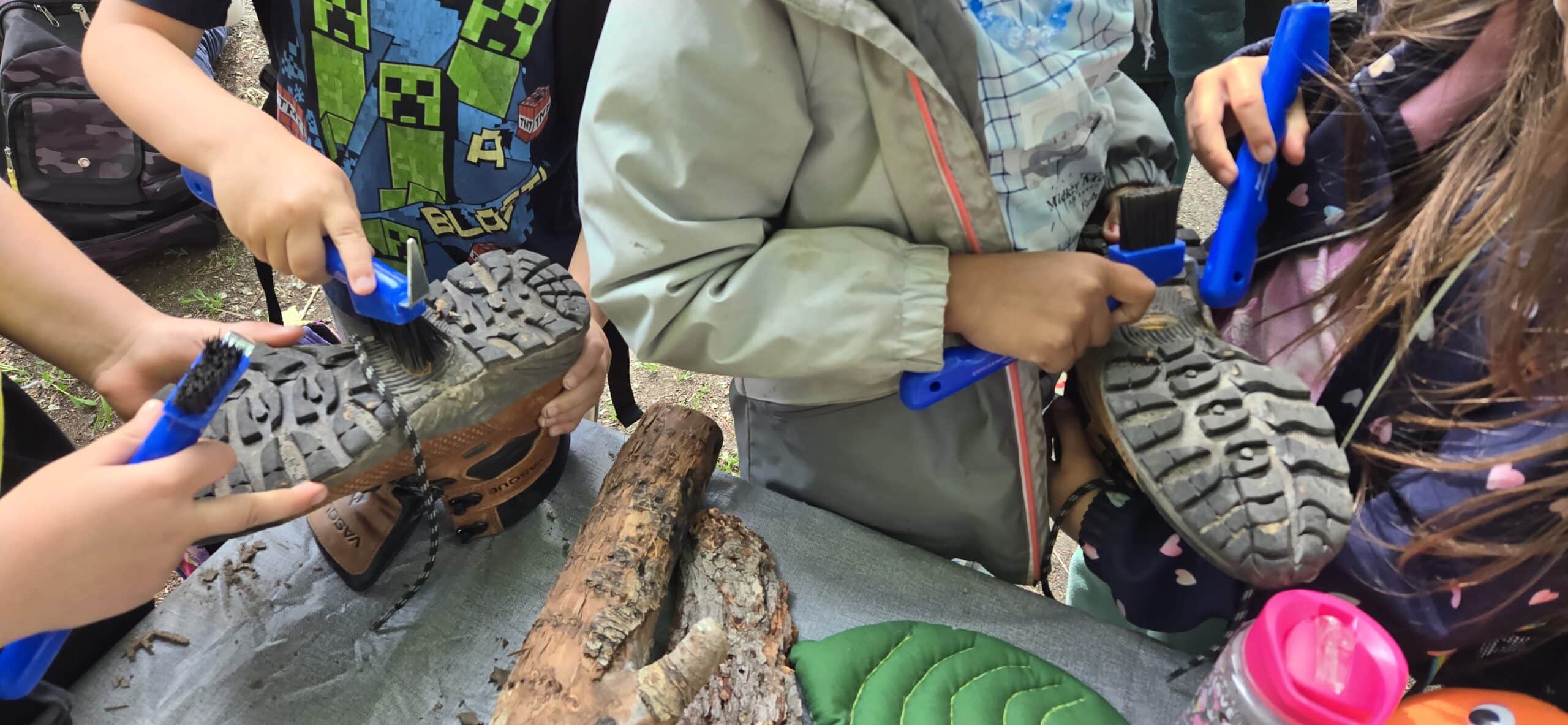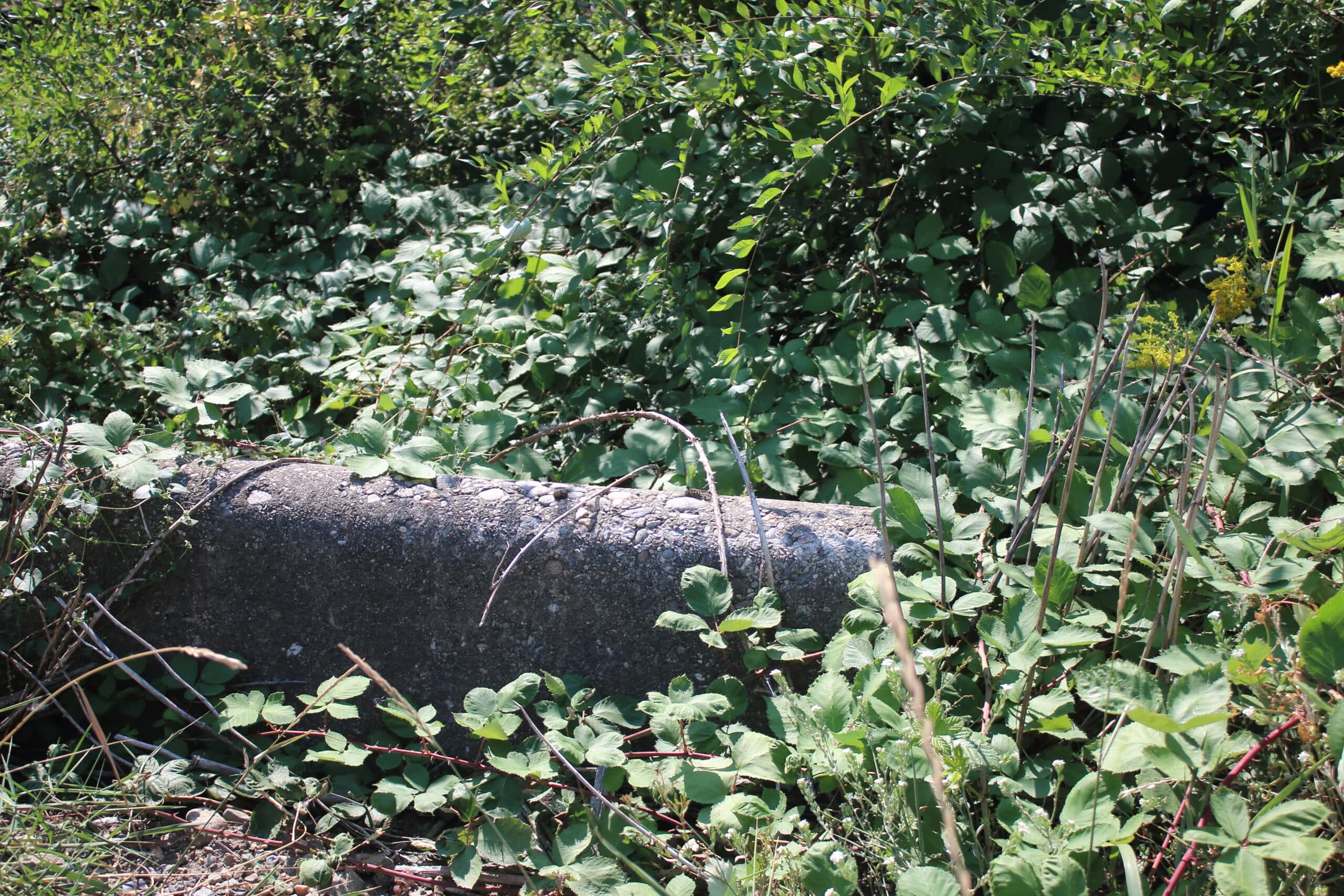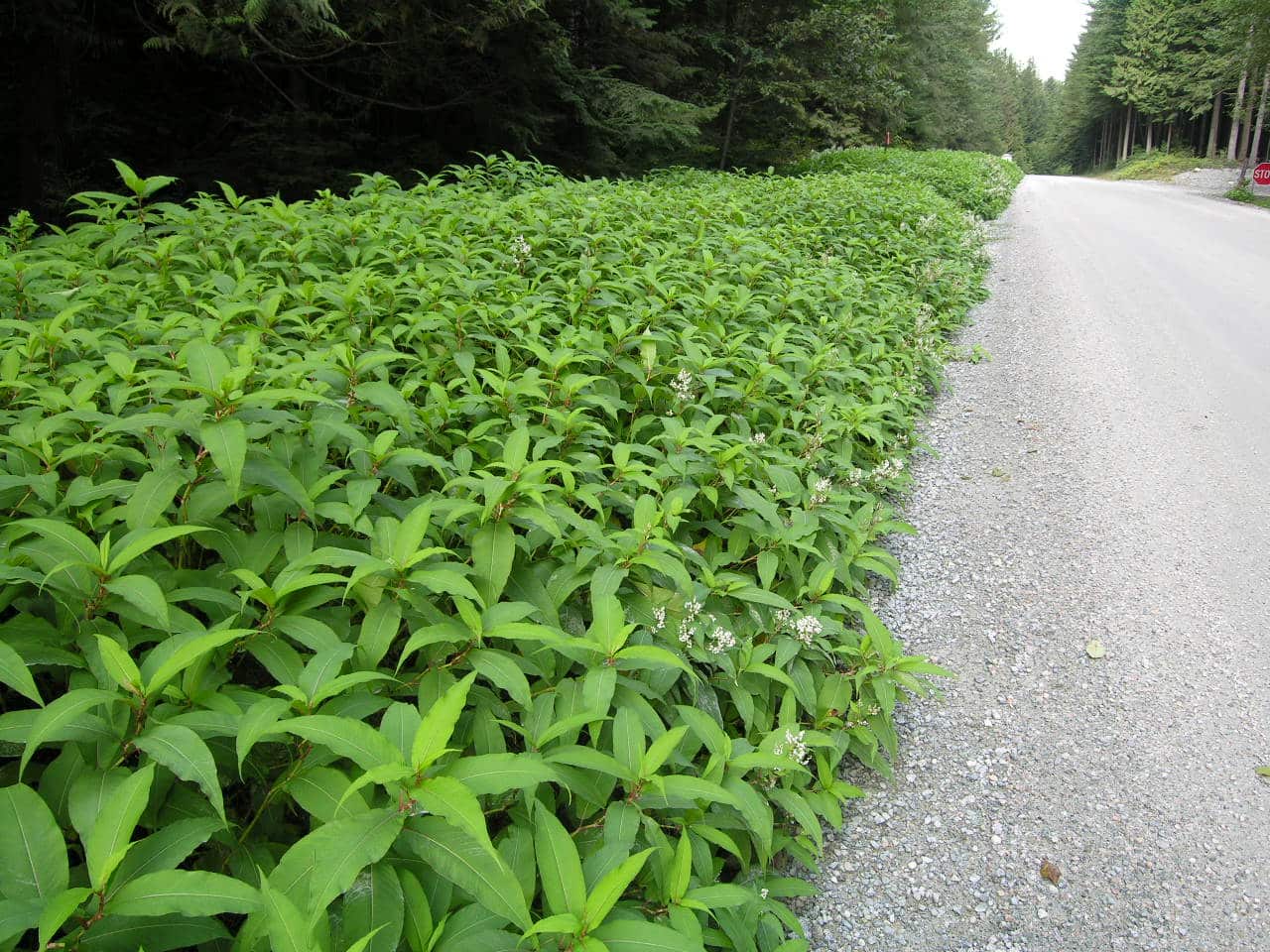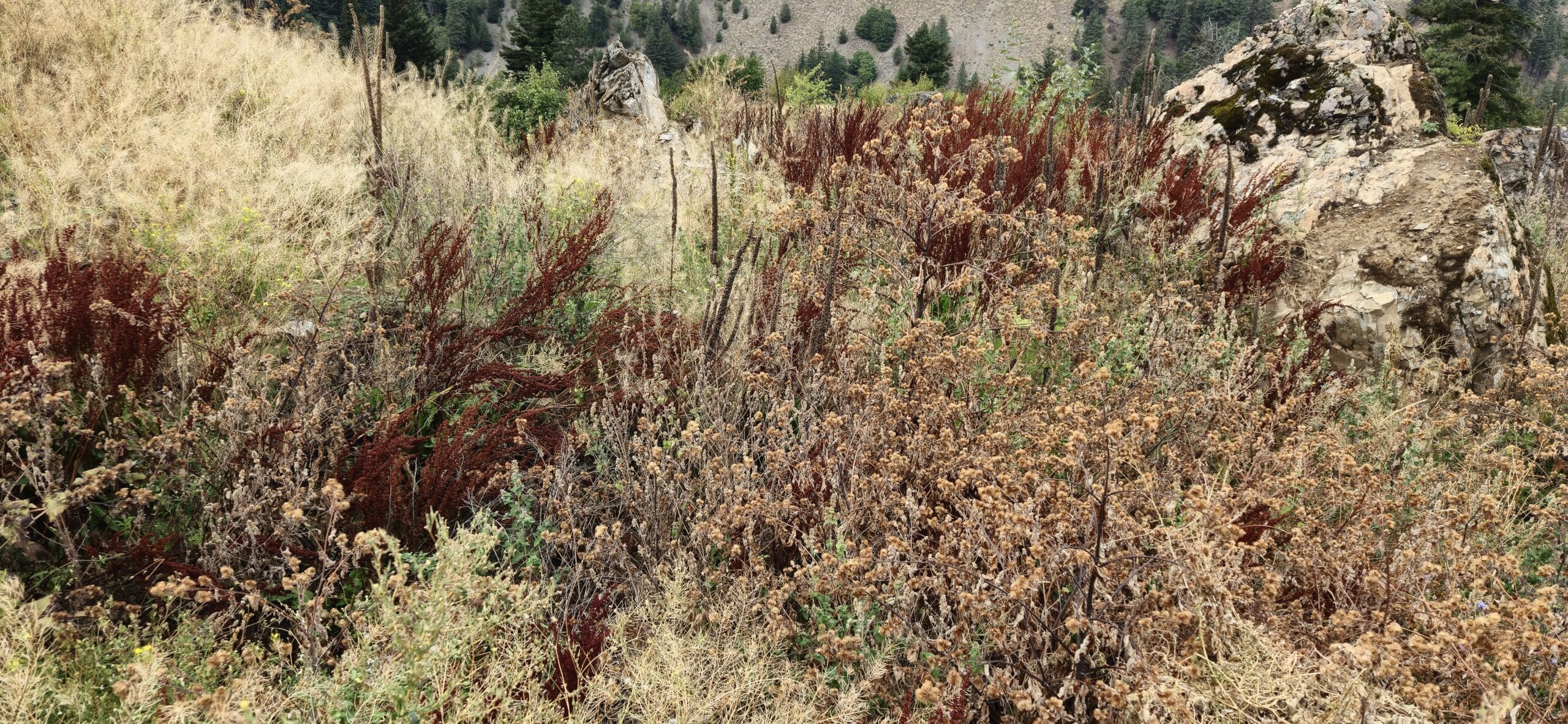By Lisa Houle | June 19, 2024
No need to wear camouflage for this kind of hunt. The BC Ministry of Agriculture and Food (BCMAF) and Agriculture and Agri-food Canada (AAFC) are calling on volunteers to join a community science hunt this summer for stink bug eggs. The information gathered will help further the understanding of an insect ally impacting invasive stink bugs.
The eggs in question belong to the brown marmorated stink bug (Halyomorpha halys; BMSB), an invasive agricultural pest in B.C. Unlike B.C.’s native rough stink bug, common brown stink bug, and western conifer seed bug, the BMSB’s identifying features are the shield shaped body, white bands on the last two antenna segments, and white marking on the abdomen.
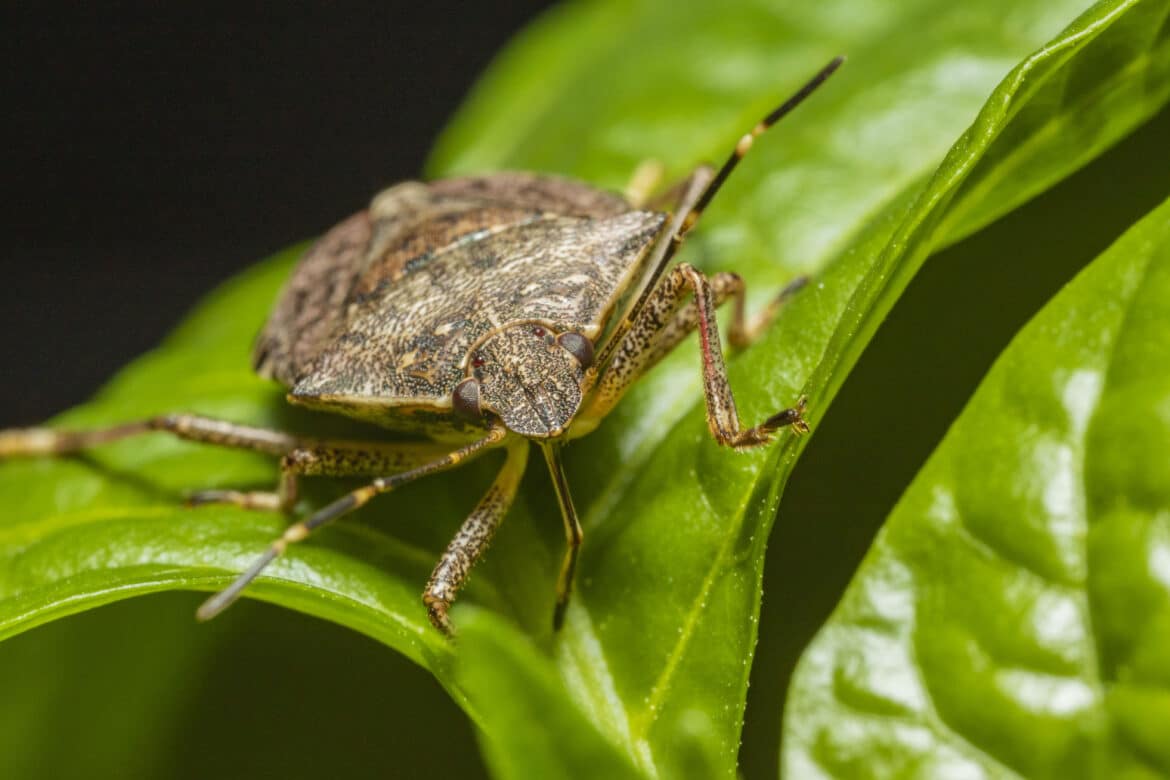
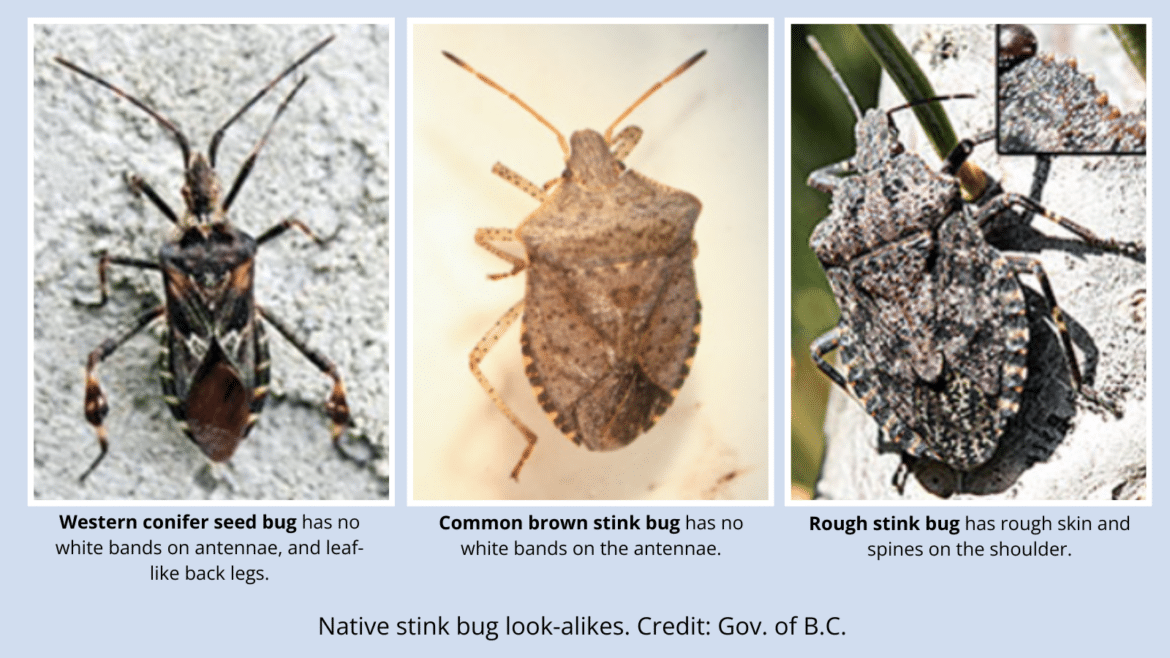
Detected in the Lower Mainland in 2015, the BMSB has now spread to several locations throughout B.C.
The BMSB is a plant pest, injecting its digestive juices while feeding directly into plant tissue which bruises unripe fruit. With a diet consisting of fruits, vegetables, seeds, green plants, and tree bark, its presence is concerning for orchard farmers. Visible signs of a BMSB infestation include deformed and discoloured fruits and seeds, shriveled berries, delayed maturity, and increased sap flow.
The samurai wasp (Trissolcus japonicus), a non-native parasitic wasp first detected in B.C. in 2018, is expected to help control BMSB populations. The BMSB and samurai wasp are both native to Asia. They likely made their way here, hitchhiking in cargo containers, on wood or other packing material.
The Egg Hunt project, which began in 2022, analyzes collected eggs to see if samurai wasps have parasitized them – laying their own eggs inside BMSB eggs, killing the BMSB eggs, and eventually reducing the BMSB population.
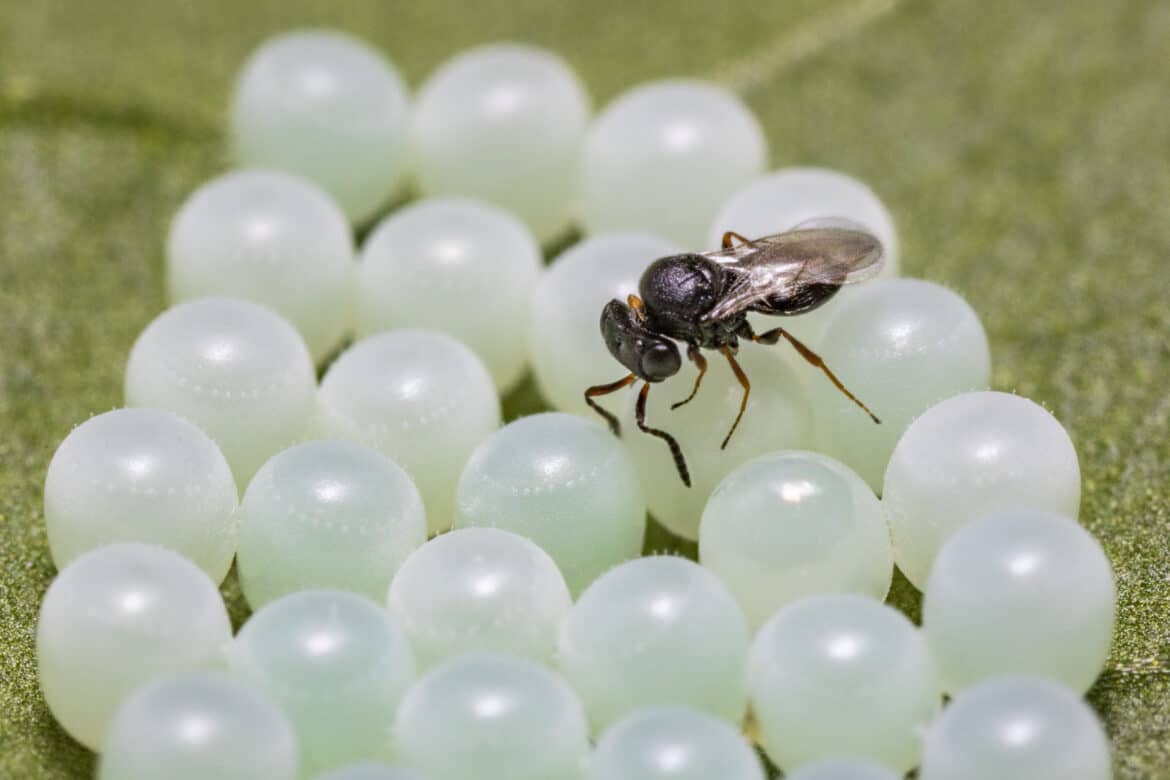
“In the first two years, we had many reports and photographs of stink bug egg masses, mostly brown marmorated stink bug, submitted. A few were parasitized and were sent to us for identification, which was exciting,” said Paul Abram, a research scientist with AAFC. “The folks who have been submitting photographs and specimens to us seem to have enjoyed the process of finding, rearing out, and learning about the eggs and the fascinating parasitoid wasps that develop in them.”
BCMAF and AAFC want to learn more about how common and widespread the samurai wasp is, and its impact on BMSB populations.
“Based on what we know about the samurai wasp’s relationship with the BMSB in other parts of the world, we might expect that it could help to keep its populations lower than they otherwise would be. This is the essence of biological control – it’s a “free service” provided by natural enemies like parasitoid wasps that can help reduce pest populations over the long term,” said Paul. “In the case of the samurai wasp, though, because it’s non-native, we are also keeping an eye on it. It might be a double-edged sword: while it might help to keep this invasive stink bug in check, it has the potential to kill the eggs of our native stink bugs too. This is something we’d like to know so that we can understand the balance of positive and negative effects.”
Information gathered over the last two years has not produced any big surprises so far, although the project began gathering momentum last year. Paul expects there might be some interesting findings as more results roll in.
“The submissions of parasitoid wasp specimens from reared-out stink bug eggs that we’ve received so far has improved our knowledge of where the samurai wasp has spread to in B.C. For example, the western-most range record we have for the samurai wasp comes from a submission by a gardener in Vancouver! We have also confirmed that it is still present in areas where we have found it in previous years (Langley for example),” said Paul. “One thing we are interested to know is whether the samurai wasp has made it to Vancouver Island or areas of Interior BC other than Kelowna.”
Through the Egg Hunt project, submissions of any stink bug egg masses can be made, including BMSB and native species. Egg masses of other stink bugs can look quite different from those pictured above – ranging in colour from pale green/yellow to dark brown or green, some may even have small spines – but share similarities: barrel-shaped and laid in clusters of 10-50 eggs. Submitted photos of suspected stink bug eggs will be assessed and confirmed by researchers at BCMAF and AAFC.
While one measure of the project’s success will be the number of egg masses reported and the number of wasps that emerge from them, Paul feels another measure of success is the correspondence they’ll have with have with people about their experiences rearing out these egg masses. Whether the eggs develop into samurai wasps or other native parasitoid wasps, the information will help BCMAF and AAFC learn more about the effect of these wasps on this fascinating food web.
“This is a great opportunity to get to know parasitoid wasps, which are definitely underappreciated despite being one of the most biodiverse groups of animals in the world – providing hundreds of millions of dollars of “ecosystem services” to Canadians every year by helping keep pests in check, reducing crop losses and the need for insecticide use,” said Paul, musing about the reactions people may have to the rearing out process. “Once you see samurai wasps emerging from stink bug eggs on your kitchen counter, your life will never be the same!”
Time is of the essence for this project, as female BMSB can lay several clusters of eggs, and up to 400 eggs in total during the summer on host plants. Once hatched, the bugs mature in about five weeks and lay eggs the following spring.
To participate in BCMAF’s and AAFC’s Egg Hunt, please visit: https://www2.gov.bc.ca/assets/gov/farming-natural-resources-and-industry/agriculture-and-seafood/animal-and-crops/plant-health/stink_bug_brochure.pdf
Lisa is a Communications and Outreach Coordinator at ISCBC. She values a diverse environment and connecting with others about environmental protection. In her spare time Lisa enjoys spending time at the ocean and beach combing for sea glass. You can reach Lisa at lhoule@bcinvasives.ca
Share


